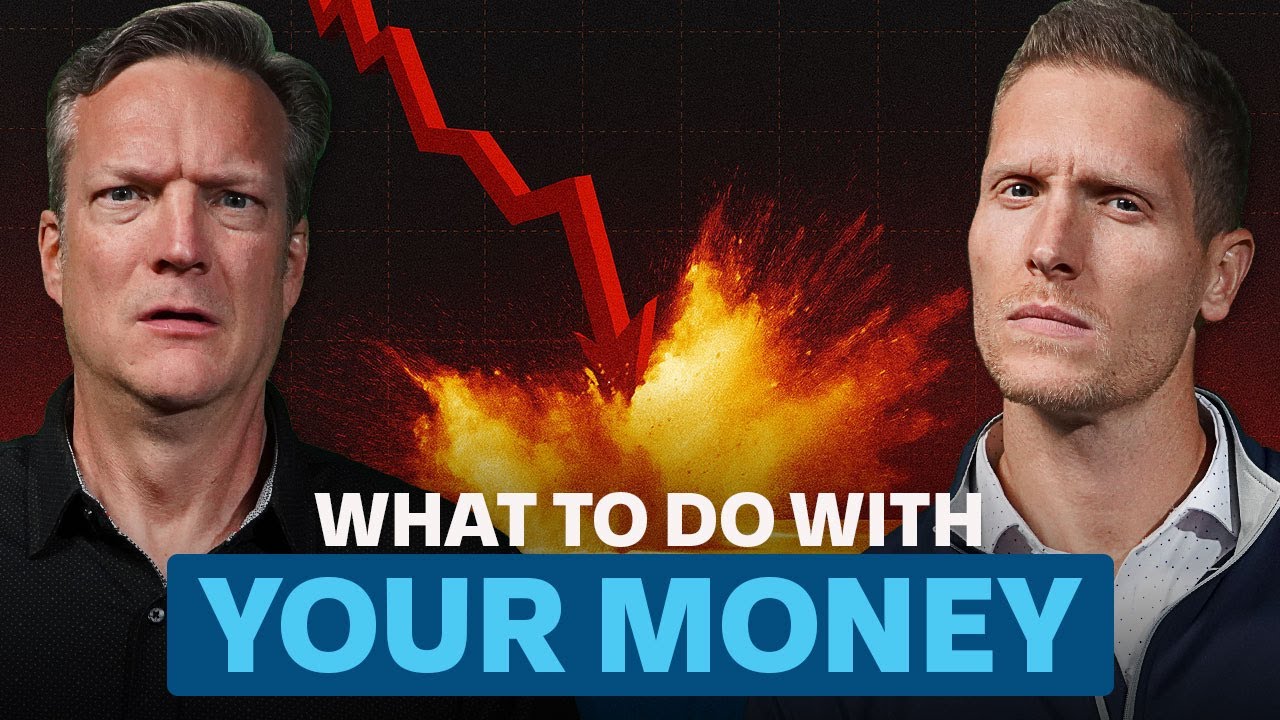The last two things we talked about were car buying and home buying. You can make a mistake there, and those are like errors of commission. You are a consumer; you are choosing to do that. This next one, I think, is so important. I think this becomes an error of omission, right? By people who are in that messy middle, because it’s hard. It requires a lot of discipline. It requires you to do something that may be uncomfortable. But if you really want to make the most of your money through the messy middle, you’ve got to do your best to hit the 25% savings rate. And when we say savings, we’re talking about saving and investing for the future, or at least moving towards that. Maybe in the messy middle, you can’t hit 25%. Maybe right now, today, you can hit 12%. The challenge I would give you is, okay, how do I get to 11% next year, and then 13% the next? And how do I continue to move along the path in that direction? Because if you can, there’s a really good chance that you’re going to set yourself up so that your future self will say, ‘Man, I’m so glad I made those hard decisions when I made them.’
But it goes further than that. What’s the ‘why’? I love this. See, you were kind of… You came up with a lot of the underpinnings for this. We actually created a great illustration that we’ve put… You can go to money.com/resources and download your free copy of this too. Why did we choose 25%? What we recognize is that if you can save 25% from now, at the age you are until you get to retirement, and we use age 65 as our estimated retirement… We wanted to say, how much of your pre-retirement income could you replace saving 25%? We actually created a grid. So if you’re a 30-year-old and you save 25% from age 30 to 65, there’s a good chance that your portfolio will be large enough that you would actually be able to get a pay raise when you retire. It could replace 119% of your pre-retirement income. Now, you might say, ‘Why on Earth would I want to do that?’ You probably wouldn’t. But what you might want to do is retire at 60, or retire at 55, or retire at 50. And so if you can get to that 25% savings rate, one of the beautiful things that it will do is, as you’re working through the financial order of operations and as you have those three steps forward and those two steps back, there may be some years where you’re able to hit 25% and crush it. And there might be some years you’re only able to hit 16. Well, in those years, Brian, you… When you started a business, you had those years. It was a messy time period. I just know that. I know that. I know you’re… You were so thankful that 24-year-old, 25-year-old Brian was saving the way that he was supposed to be saving to give him some grace through that messy middle. I mean, we do an annual survey of all of our millionaire clients. And I am still waiting. We close out the survey with some open-ended questions of what would you tell your younger self? And I have yet to see… Now, maybe somebody… The bigger we get, the more likely we’ll have a Daniel practical joke or a chaos seeker who will jump in there based on what I’m saying. But it never surprises me that everybody’s like, ‘I wish, even though these are successful people, I wish I’d have saved more and started earlier.’ It’s always… I don’t have people who say, ‘Man, I regret those early investments or purchases of getting into this saving and investment game.’ And I think that’s why this is where, Bo, we do have to walk a line. I want to give everyone the grace that that messy middle deserves. However, we’ve got to be like your strength coaches. We are the ones that are going to put the pressure. I know you’re an athlete. I guess it’s not fair to call you an ex-athlete. You still get up and train and do… Put in the work and stuff. But it is one of those things where I have to steal that your coach is saying, where if you do it right, you do it light. If you do it wrong, you’re going to do it long. And there is not a better illustration. So look at this… We are going to spot you, but we’re going to try to put as much weight on you as possible because it’s important. And this is probably… We are going to, in a minute, talk about your time as a component of how you allocate every hour that you have access to. But I want to talk to you about the component of time that goes into the money side of things. And think about this. This is a great illustration. If you have… We’re going to go through each decade. For somebody who’s in their 20s, if you can just save $100 a month from the time you’re 20 to the time you’re 65. Think about that. That’s 45 years of savings. So, yeah, it’s a longer time commitment. It’s only $100 a month. It’s $100 a month or $54,000 total that entire time period. So think about… Now, let’s contrast this to the 30-something who said, ‘Hey, I’m just going to enjoy myself in my 20s. But you know what? I’ll pick up the slack twofold in my 30s.’ So instead of doing $100 a month, this person saved from 30 to 65 $200 a month, or a total investment of $84,000. They’ve already invested more than the 20-something did. Then we go to the 40-something. Once again, they said, ‘Look, I deferred. I didn’t start, so instead of doing $200 a month, I’m going to double that. I’ll do $400 a month for the next 25 years.’ That’s $120,000 invested. And then, of course, if you waited until you’re 50, you’re almost doing $1,000 a month, right at $800 a month. That would be $144,000 invested over that 15-year period. I mean, that 50-year-old saved a lot more money than the 20-year-old, three times, almost three times what the 20-year-old did. But like I said, doing it right meant that it was light. I mean, in the fact that if you look at the actual results, this is the power of compounding. Now, you guys know we put a glide path in a lot of our illustrations. But for this one, we just did a straight 9% for everyone, so you didn’t lose focus on the true point here. I’m amazed to see that the person who started in their 20s, their account is now worth just off doing $100 a month in this illustration. It’s worth $740,000. Amazing, or 93% of their value is the growth, not what they put in. The growth, they had to do the easy work. The money did all the hard work for them. Think about the 30-year-old. They put in all that money, and they still have 80% of growth. This is why I love the 25% because it still reflects that you can be extremely successful, even if you’re listening to this in your 30s and you’re starting today on your investment journey. It’s only… But it’s worth still, you know, $60,000 less than the 20-something. $588,000, the 40-year-old. It’s worth a little less than half a million or 73% growth. And then the 50-something, their account grows to $33,000 even though they were investing $800 a month, close to 1,000 bucks because they only had a chance for the account to grow 52% versus the 93% the 20-something. Listen to me as your strength and training coach. You’ve got to start. You’ve got to do something. Don’t waste the most important and valuable element of this entire exercise, which is time. I’m gracefield, and I want you to know you’re not alone. But please do something. I don’t care if it’s $25 a month. I don’t care if it’s $50 a month. Start now so that as times get easier and better, you can add to your prior successes versus if you just defer and procrastinate because life is hard. That doesn’t fix it; that makes it harder. Even if you come at it two, three, four times harder than you would have if you started earlier. Check out our Financial Order of Operations for more information.














